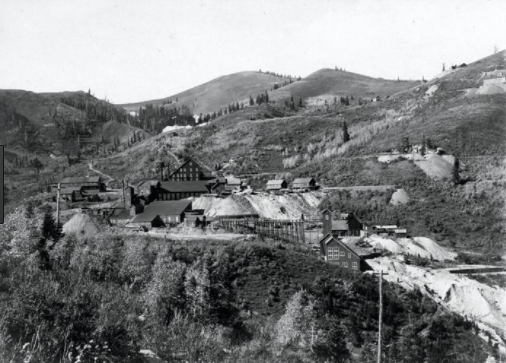History of Park City, Utah
Park City has had a long and colorful history of silver mining, red light district, bootlegging, ghost town, devastating fires, skiing legends, resort take overs. Here's a short timeline of Park City's story. For a complete list, email info@hongmcdonald.com

1868: Soldiers from the federal troop, out prospecting, climbed over the mountains from Big Cottonwood Canyon to Park City area and finds silver. Park City then becomes known for not only it's silver, but lead, zinc, and gold.
1969: Workers, including Chinese, arrive to Park City on the Transcontinental Railroad to what was then known as Parley's Park.
1870: Parley's Park total population of 164.
1872: Parley's Park was shortened to Park City.
1880: The first issue of The Park Record comes off the press. Currently, it's the oldest continuously published newspaper in Utah.
1884: Park City is incorporated. Total population 5000.
1893. The US Government ends the silver standard, no longer using silver to back paper currency, and silver prices drop.
1898: Park City approached a population of 10,000. In June 1898, 200 of the town's 350 structures, homes and businesses burn in the worst fire Park City has ever seen. It left 500 homeless and caused over $1 million in property damage.
1947: The first lift goes in at Snow Park (now Deer Valley Resort).
1963: United Park City Mines receives a federal loan from the Area Redevelopment Agency of $1.25 million to start a ski area (now Park City Mountain Resort). Lift passes cost $3.50 a day, almost 50,000 skier days that first year. A mine train takes skiers to the Silver King Mine tunnel, then up a shaft to the mountain. It's a hit, and people started moving to Park City.
1968: Park West Ski Area (now Canyons Ski Resort) open.
2002: Park City is the site of the SIX Winter Olympic Games. Deer Valley Resort hosts slalom, freestyle moguls, and aerials. Utah Olympic Park (UOP) hosts bobsleigh, lug, skeleton, Nordic combined, and ski jumping. Park City Mountain Resort hosts giant slalom, snowboard, GS, and half pipe.

1868: Soldiers from the federal troop, out prospecting, climbed over the mountains from Big Cottonwood Canyon to Park City area and finds silver. Park City then becomes known for not only it's silver, but lead, zinc, and gold.
1969: Workers, including Chinese, arrive to Park City on the Transcontinental Railroad to what was then known as Parley's Park.
1870: Parley's Park total population of 164.
1872: Parley's Park was shortened to Park City.
1880: The first issue of The Park Record comes off the press. Currently, it's the oldest continuously published newspaper in Utah.
1884: Park City is incorporated. Total population 5000.
1893. The US Government ends the silver standard, no longer using silver to back paper currency, and silver prices drop.
1898: Park City approached a population of 10,000. In June 1898, 200 of the town's 350 structures, homes and businesses burn in the worst fire Park City has ever seen. It left 500 homeless and caused over $1 million in property damage.
1947: The first lift goes in at Snow Park (now Deer Valley Resort).
1963: United Park City Mines receives a federal loan from the Area Redevelopment Agency of $1.25 million to start a ski area (now Park City Mountain Resort). Lift passes cost $3.50 a day, almost 50,000 skier days that first year. A mine train takes skiers to the Silver King Mine tunnel, then up a shaft to the mountain. It's a hit, and people started moving to Park City.
1968: Park West Ski Area (now Canyons Ski Resort) open.
2002: Park City is the site of the SIX Winter Olympic Games. Deer Valley Resort hosts slalom, freestyle moguls, and aerials. Utah Olympic Park (UOP) hosts bobsleigh, lug, skeleton, Nordic combined, and ski jumping. Park City Mountain Resort hosts giant slalom, snowboard, GS, and half pipe.



